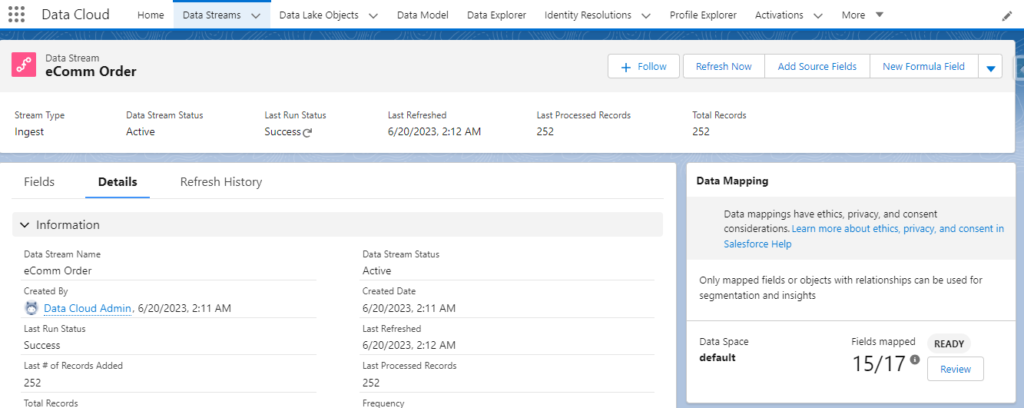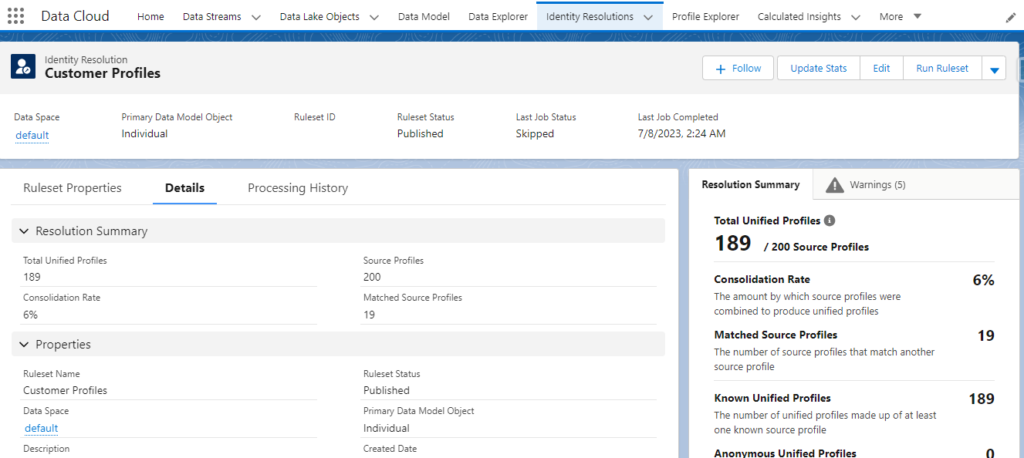Data cloud key features are Connect, Harmonize, Unify, Analyze & Predict, Act

Connect:
In Salesforce Data Cloud, We can connect and bring data from various sources, regardless of whether it is batch data or streaming real-time data. You can easily connect with CRM platforms, marketing clouds, Amazon S3, Google Cloud Storage, APIs, websites, mobile apps, MuleSoft, and more.
The Data Streams tab tab can be used to ingest the data into data cloud.
Example: We have Ecommerce data in S3, S3 data can be ingested into the data cloud using the data streams.

Harmonize:
Organising and standardising the data to achieve a unified view of the data in the Data Cloud is essential. This involves creating mappings between connected data sources and the customer 360 data model. If the standard data model doesn’t fully meet the specific needs of a business, custom data model objects can be created.
The mapping process can be facilitated using the Data Lake Object/Data Stream Object tabs, which help map objects together.
Example: E-commerce Customer has attributes first name, and last name can be mapped to Individual object attribute First name and Last name in customer 360 data model.

Unify:
Identity resolution plays a crucial role in creating unified profiles. It involves finding and connecting different data records from various sources and entities. This helps to eliminate duplicate or conflicting data and it enhances data quality.
The Identity Resolutions tab is a valuable tool for streamlining the generation of unified profiles.
Example: We have customer data ingested from multiple systems and mapped. We can use the standardised data and create a unified record using identity resolution.

Analyse & Predict:
The unified profiles created in the Data Cloud can be used to provide insights such as customer lifetime value and customer satisfaction scores. Additionally, these profiles can be easily integrated with external Artificial Intelligence or business intelligence tools to generate predictions and recommendations.
The Calculated Insights tab is a helpful tool for calculating multidimensional metrics such as customer lifetime value.
Example: We can connect to Tableau to create reports on the Frequent buyer list and send the reports back to the data cloud without any code.

Act:
Once the data has been organised efficiently, businesses gain the capability to generate streaming insights that can trigger data actions, such as updating trigger flows or lightning pages. Additionally, we can create segments to target specific audiences for advertising on various marketing platforms effectively.
The Segments tab can create customer segmentation based on their data. Similarly, the Activations tab can create activations for specific purposes.
Example: An E-commerce company can use data actions to trigger a discount/offer to a customer in the marketing cloud when customers go through a specific product and have yet to purchase it.

Overall, Salesforce Data Cloud offers robust set of features to efficiently connect, harmonize, unify, analyse, and act on data, empowering them to make data-driven decisions, personalization and Customer Experience.


